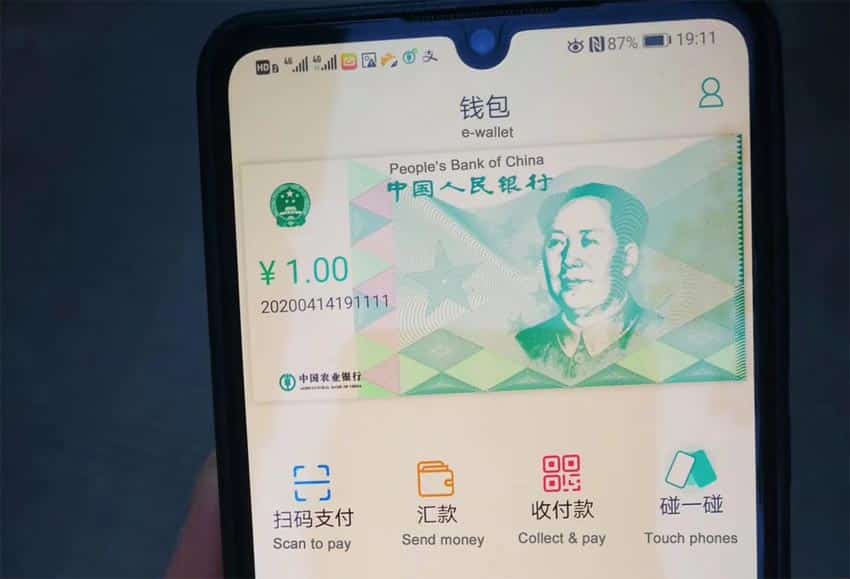The advent of the Digital Yuan (e-CNY) marks a transformative leap in how currency is managed and transacted in the world’s second-largest economy. As China forges ahead with this digital currency, ensuring robust security protocols is paramount to its success and user trust. This article explores the multifaceted approach to securing the e-CNY against a backdrop of cybersecurity threats and technological advancements. Yuan Prime is your worry-free route to investment education.
- Understanding the Digital Yuan: A Primer
- The Infrastructure of Digital Yuan: Building Blocks of Security
- User Authentication Protocols
- Transaction Security Measures
- The Regulatory Framework for Digital Yuan
- Risks and Challenges in Digital Yuan Transactions
- Best Practices for Consumers and Businesses
- Innovations in Securing Digital Currency Transactions
- Conclusion
Understanding the Digital Yuan: A Primer
China’s Digital Yuan, the e-CNY, is a state-backed digital currency designed to mirror the value of the physical yuan. Unlike decentralized cryptocurrencies, e-CNY operates on a permissioned ledger, maintaining the central authority of the People’s Bank of China (PBOC). It offers a blend of technological innovation and strict regulatory oversight, setting a new precedent in the digital economy.

The Infrastructure of Digital Yuan: Building Blocks of Security
The PBOC anchors the e-CNY’s infrastructure, ensuring transaction integrity through a hybrid blockchain model. This model employs advanced encryption and a distributed ledger, yet unlike cryptocurrencies, it does not fully decentralize control. This centralized approach allows for stringent security oversight and rapid response to any threats.
User Authentication Protocols
To ensure the security of digital yuan transactions, the e-CNY system enforces comprehensive user authentication measures. This includes a thorough Know Your Customer (KYC) protocol, which is bolstered by the implementation of multi-factor authentication and the incorporation of biometric verification techniques. These security layers are essential to create a robust foundation that protects user identities and their digital assets, setting a high standard for transactional security in the digital currency space.
Transaction Security Measures
To safeguard each e-CNY transaction, the People’s Bank of China (PBOC) employs cutting-edge encryption techniques, effectively rendering any interception attempts futile. In tandem, a sophisticated real-time monitoring system is in place, bolstered by advanced machine learning algorithms. These algorithms are fine-tuned to identify and react to any abnormal activities, providing a comprehensive shield against any unauthorized access or fraudulent transactions. This multi-layered security strategy ensures that every digital yuan moved within the system is under vigilant protection, reflecting the PBOC’s commitment to maintaining the integrity of its digital currency operations.
The Regulatory Framework for Digital Yuan
In navigating the complex terrain of digital currency regulation, China has established a stringent framework for the e-CNY, adhering to international security standards while prioritizing anti-fraud measures and privacy protection. This delicate balance is maintained through continuous oversight and adaptation, ensuring that the digital yuan meets global benchmarks for financial safety and individual data security.
Risks and Challenges in Digital Yuan Transactions
In the cybersecurity landscape, the digital yuan faces a spectrum of threats, ranging from commonplace phishing scams to complex cybersecurity attacks. Its centralized structure requires constant monitoring and proactive adaptation to mitigate these risks effectively. Although security breaches have been relatively rare, each incident provides critical data, driving the evolution and fortification of the currency’s security protocols to guard against future vulnerabilities.
Best Practices for Consumers and Businesses
For optimal security in digital yuan transactions, individuals must judiciously select their wallets—opt for hot wallets to ensure liquidity for frequent transactions and cold wallets for long-term, secure storage of assets. It is imperative to practice cautious transaction behavior, such as double-checking recipient information and steering clear of unsecured public Wi-Fi networks when making transactions. Equally, businesses are required to comply with the PBOC’s stringent security guidelines, implementing the prescribed protective protocols to safeguard transaction integrity and customer data effectively.
Innovations in Securing Digital Currency Transactions
The safeguarding tapestry of digital currencies is in a state of constant advancement, particularly for the e-CNY, with the introduction of cutting-edge cryptographic innovations aimed at bolstering the integrity of transactions. Leveraging the prowess of artificial intelligence, these systems actively monitor and identify anomalies, providing a sophisticated layer of defense that adapts to emerging threats, underscoring a forward-thinking approach to the security of digital currency transactions.
Conclusion
The digital yuan represents a monumental shift in the financial landscape, necessitating a security protocol as dynamic and robust as the currency itself. For those engaging with this new economic medium, services allow for digital Yuan trading, fostering a user-friendly environment for the adoption and use of this currency. While technological and regulatory measures form a formidable defense, the onus also falls on users to maintain vigilance. As digital currencies evolve, so too will the measures to protect them, promising a secure and resilient future for digital transactions.
















